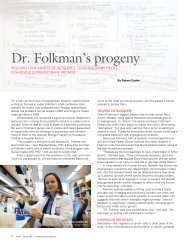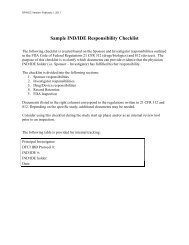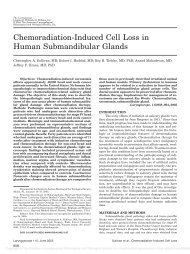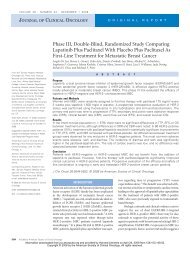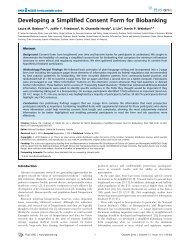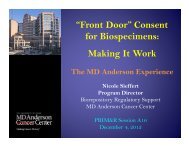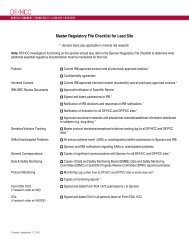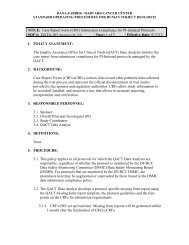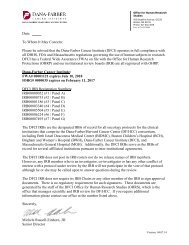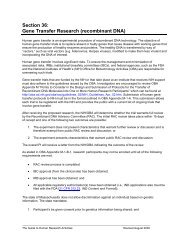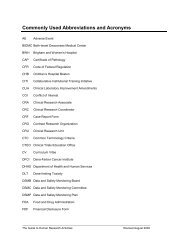Scientific Presentations Summer 2009 - Dana-Farber/Harvard ...
Scientific Presentations Summer 2009 - Dana-Farber/Harvard ...
Scientific Presentations Summer 2009 - Dana-Farber/Harvard ...
Create successful ePaper yourself
Turn your PDF publications into a flip-book with our unique Google optimized e-Paper software.
Targeting Glioma Growth<br />
Cody Cameron<br />
Mentor: Khalid Shah, PhD<br />
<strong>Scientific</strong> Advisor: Tugba Bagci, PhD<br />
Massachusetts General Hospital<br />
Glioma is a form of brain cancer which results in very sudden yet detrimental effects<br />
to the patient. Like most cancers, gliomas result from the deregulation of certain<br />
components of the cell cycle, such as proliferation. While normal cells regulate their<br />
proliferation and undergo apoptosis when damaged, glioma cells undergo uncontrolled<br />
proliferation, thereby creating neoplasms. Among other pathways, the PI3<br />
Kinase-Akt pathway is commonly mutated in gliomas resulting in uncontrolled<br />
proliferation. Over activation of PI3 Kinase leads to increased phosphorylation and<br />
thereby activation of Akt, which then leads to increased cell growth. The inhibition<br />
of activity along the PI3 Kinase pathway can achieved with a new drug, PI-103. The<br />
overall goal of the project is to test the efficacy of PI-103 alone and in combination<br />
with stem cell based pro-apoptotic therapies in both malignant and invasive glioma<br />
cells in vitro as well as in mouse models of glioma. My part in the project is to test the<br />
effect of PI-103 on the PI3 Kinase pathway components in different glioma cells in<br />
culture. Specifically, I aim to demonstrate the changes in the phosphorylation of Akt<br />
levels in response to different doses of PI-103 treatment in six established and two<br />
primary human glioma cell lines. My results will determine whether this drug will<br />
inhibit the activation of the PI3-kinase-Akt pathway in human glial cells. This should<br />
set up a clear-cut plan for in vivo experiments that will follow in culture studies and<br />
will be subsequently performed in the laboratory.



